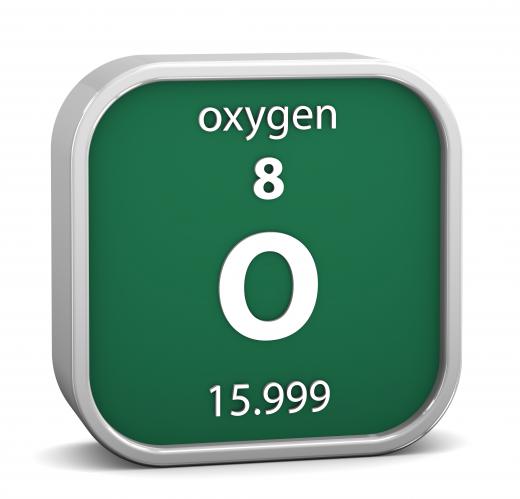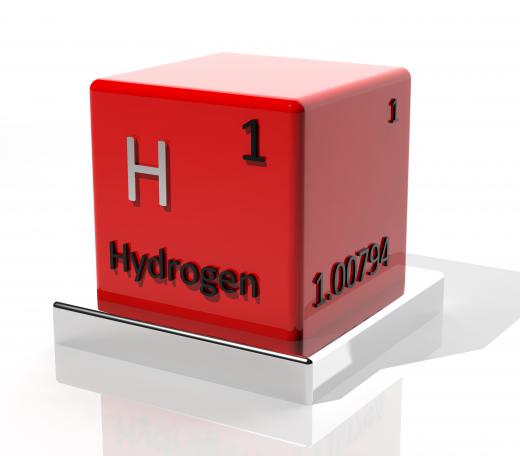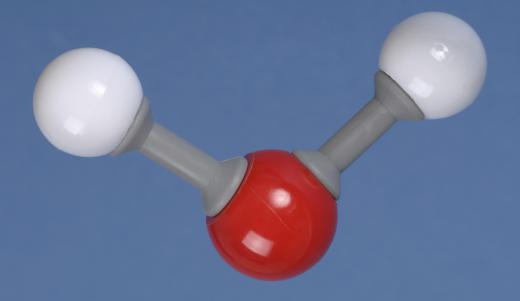What is the Electrolysis of Water?
The electrolysis of water is a process that uses an electrical current to split water molecules into hydrogen and oxygen. It is often performed as an experiment in high school science labs and has been studied as a method of obtaining hydrogen fuel. As of 2010, however, water electrolysis had not found wide commercial or industrial use. The process requires three components: an electrical source, two electrodes and water.
Pure water is not used in electrolysis — pure water inhibits electrical conduction. To allow the electrical current to pass through the water, substances must be added to it. These substances dissolve to form something called electrolytes.

An electrolyte is any substance that conducts electricity. Electrolytes are able to conduct electricity because they are composed of electrically charged atoms or molecules called ions. Although water is composed of hydrogen and oxygen ions, the water molecule itself has a neutral electrical charge. Salt or a few drops of an acid or base are commonly added to the water to form an electrolyte solution.

Batteries, a direct current (DC) power source or solar electrical panels are commonly used to supply electricity for the electrolysis of water. Two electrodes are wired to the electrical source and immersed in a container of water. When electricity is applied, the water molecules begin to split, forming unstable ions of hydrogen (H+) and hydroxide (OH-).

The hydrogen ions, which are missing an electron, are positively charged. They migrate toward the negative electrode where free electrons are flowing into the water. Here the hydrogen ions gain an electron to form stable hydrogen atoms. Individual hydrogen atoms combine to form hydrogen molecules (H2), which bubble to the surface. This reaction can be expressed as: 2 H+ + 2 e- → H 2.
By contrast, the hydroxide ions carry too many electrons. They migrate toward the positive electrode, where the extra electrons are stripped away and drawn into the electrical circuit. This leaves oxygen molecules and water. This reaction can be expressed as: 4 OH-− 4 e- → O2 + 2H2O. The oxygen molecules bubble to the surface.
Although the electrolysis of water has been mainly confined to laboratories, the use of hydrogen as a clean energy source has brought renewed interest. Finding a clean energy source to drive the reaction, however, poses practical and environmental concerns. The electrolysis of water is neither efficient nor cheap.
Fuel costs have been a major obstacle. The environmental impact of electrical generation is another. In particular, the carbon dioxide released by thermal power plants must be considered. These environmental and technological difficulties might not prove insurmountable. Until they are overcome, however, water hydrolysis remains an impractical source for fulfilling society's energy needs.
AS FEATURED ON:
AS FEATURED ON:













Discussion Comments
this is a godsend!
Post your comments